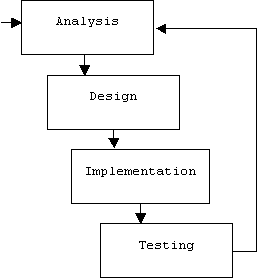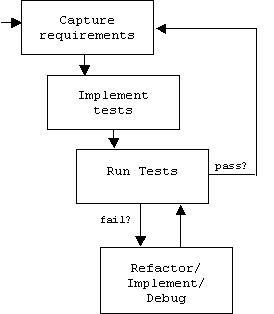Overview of Software Engineering
Stakeholders
Stakeholders are the people or organizations interested in the outcome of a software project. The customer commissions the system. The developer builds the system. The users use the system.
The Phases of Software Development
The traditional waterfall model views software development as a workflow consisting of five distinct phases. The output of one phase (called an artifact) is the input of the next:

Analysis
Design
Implementation
Testing
Maintenance
Processes
The Waterfall
In the traditional waterfall method one phase follows another. Returning to a phase after it is complete is not allowed. This prevents feature creep-- the tendency for customers to add new requirements late in the development process.
Iterative-Incremental Development
There are two flaws with the Waterfall model. First, change is inevitable. It's nearly impossible to anticipate all of the system requirements before design and implementation. Second, the riskiest phase, testing, occurs late in the process.
Iterative-Incremental processes such as Model-Driven Development (MDD) and Rational Unified Process (RUP) are organized into short 2 - 3 week development cycles called iterations. During an iteration each artifact is extended. The extension is called an increment.
During early iterations the riskiest requirements can be specified, designed, implemented, and tested. This places risk near the beginning of the process.
There is no need for a maintenance phase because there is no preset limit to the number of iterations that can be performed; new features can be added in new iterations:

Agile Development
Agile methodologies such as Extreme Programming (XP), Test-Driven Development (TDD), and Agile Model-Driven Development (AMDD) are iterative-incremental processes that de-emphasize big up front designs. Instead, design comes late in the process in the form of refactoring (techniques for redesigning existing code).
